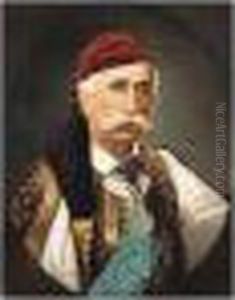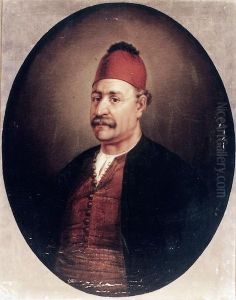Dionysios Tsokos Paintings
Dionysios Tsokos was a distinguished Greek painter associated with the Heptanese School, a regional art movement that emerged in the Ionian Islands during the 19th century. Born in 1820 in Zakynthos, one of the Ionian Islands, Tsokos was exposed to an environment that was a melting pot of Greek, Italian, and French cultural influences due to the complex history of the region. These influences would later be reflected in his artistic style, which combined elements from the Western European tradition with Byzantine and post-Byzantine characteristics.
In his early years, Tsokos was trained by prominent artists of the time. He showed great promise as a painter and went on to study at the Royal Academy of Fine Arts in Venice, which was one of the most important centers for artistic education in the region. The academy played a crucial role in shaping his technique and approach to painting.
Tsokos's work is characterized by its romantic expression, attention to detail, and vivid portrayal of historical and religious themes. He was particularly renowned for his portraiture, where he captured not only the likeness but also the character and social status of his subjects. Tsokos also painted several significant historical scenes, contributing to the construction of a national identity in the arts amidst Greece’s ongoing struggle for independence and self-determination during the 19th century.
Throughout his career, Tsokos remained actively engaged with the evolving art scene. He became a central figure in the intellectual and artistic circles of his time, contributing to the cultural life of the newly established Greek state. His works were widely exhibited and gained recognition both in Greece and abroad.
Dionysios Tsokos died prematurely in 1862, leaving behind a legacy that was essential to the development of modern Greek painting. His body of work continues to be celebrated for its blend of Greek tradition with European artistic movements, and his influence is evident in the generations of Greek artists that followed.

